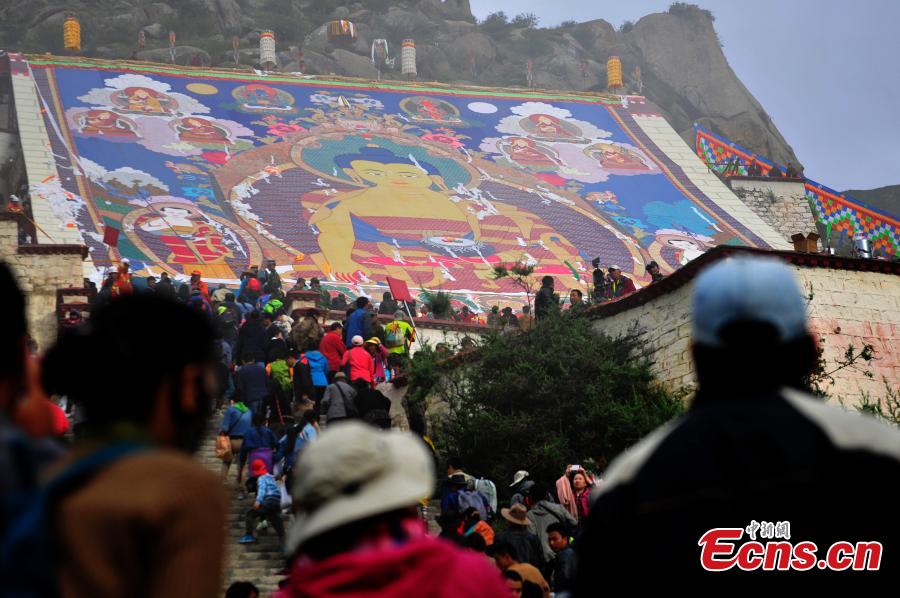 |
|
Tourists view a giant Thangka during the Shoton Festival at Drepung Monastery on the outskirts of Lhasa, Tibet autonomous region on August 25, 2014. [Photo/China News Service]
|
What is Thangka?
Thangin Tibetan means to display andkameans silk. Thangka is a kind ofpaintingart– religious painting – that originated during the reign of Tibetan king Songtsen Gampo (AD 617-650) and prospered during the 18th and 19th centuries. A Thangka is a painting drawn on cotton or silk appliqué with vivid ethnic features and intense religious colors, which usually depicts the history, politics, culture and social life of the Tibetan people.
Thangka is often worshipped in temples, Buddha's halls or even in Buddhist disciples' homes in Tibet, which has been not only a pure handicraft, but more of a religious symbol.
It is mainly divided into two categories, painting Thangka and embroidered Thangka. The former one is directly painted on canvas using traditional pigments. The latter is embroidered on silk satin using precious mineral gems such as gold, silk, pearl, coral, agate, zinnober and plant pigments such as saffron crocus and indigo. Obviously, the latter one is of more artistic value, whose gorgeous colors can last for several centuries.
